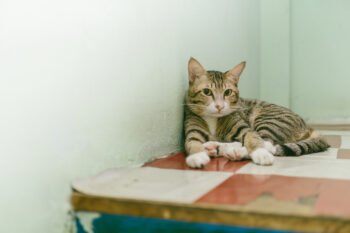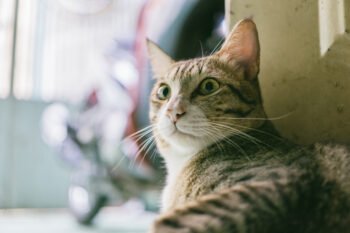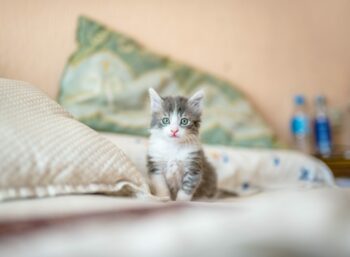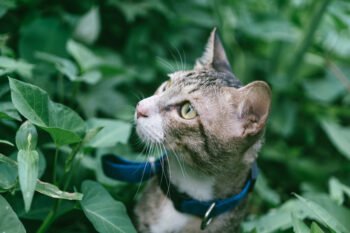Glenda Moore of Utah could be called a cat lover: The U.S. Forest Service employee shares her home with eight felines, which she lets enjoy fresh air and bird watching. Her cats luxuriate within the safety of a 26-foot enclosure that includes a ladder, perches, a scratching post and even wind chimes. “The cats get the benefit of the fresh air, the ability to check out the activity in the backyard and a different place to nap,” she says.
Cat Enclosure Options
If you want to offer your own cat a secure place to experience the great outdoors, you have a number of options. You can purchase a pre-built cat enclosure, assemble a structure from a kit or plans, or you can come up with your own design. Kristine Kischer, owner of Toronto-based Habitat Haven, says most of her customers start with modest enclosures, then remodel and build up. “It doesn’t have to be this humongous expense right off the get-go,” she says. “I’ve had one lady add on five times in the last six years.”
Habitat Haven, which ships throughout North America, offers a selection of kits. The company also allows you to plan an enclosure by choosing different elements. A “starter” enclosure runs from $500 to $1,000. The kit arrives with instructions and all necessary hardware.
Cost-effective Solutions
You needn’t worry about spending a fortune. Dr. Elizabeth Colleran, DVM, thinks an outdoor enclosure is such a great idea, she installed one herself. “I love outdoor enclosures for cats! I built one off a window in our hospital with lumber and fencing wire to prove to people that you don’t have to spend millions to get a safe, fun enclosure,” says Dr. Colleran, who practices in Chico, Calif., and Portland, Ore.
Major pet organizations generally are in favor of outdoor enclosures for cats too. The Humane Society of the United States sells portable enclosures on its Web site. There, you’ll also find information about a number of businesses that sell plans, kits and pre-built structures.
A Cat Enclosure Checklist
As you plan an enclosure, Dr. Colleran and other experts list several important considerations:
- Access How will your kitty move from your house to the enclosure? Will you allow free access, letting your cat come and go at will? “One of the most important considerations for me was that I only had to prop open a window to allow the cats access to the cat run,” Moore says. Access should be energy-efficient, safe and easy, advises Dr. Colleran. “A covered cat door is a good choice if it is insulated,” she says.
- Security and protection Test every seam to make sure your enclosure is secured to the ground so that your cat can’t dig its way out, Dr. Colleran cautions. You’ll also want to ensure that your cat has a shady, fully covered space that can offer relief from the sun and weather.
Your enclosure should be large enough to accommodate the family cats without overcrowding, which can lead to behavior problems. Each cat should have enough room to claim its own space and walk comfortably in and out of the enclosure.
- Cleanliness Use materials that you can easily clean, and practice flea control in areas that contact the soil. Regular cleaning will help protect your kitty’s health and avoid the buildup of unpleasant odors.
- Enrichment Vertical climbing and perches make an enclosure more interesting for your cat, says Dr. Colleran. Moore suggests providing separate areas for watching backyard activity and quietly snoozing.
- Neighborliness Consider both what you want to view in your backyard and what others may be able to see, says Kischer. Put your enclosure in a place where it isn’t publicly visible — that’s a plus for your cats and your neighbors.
Once you build an enclosure, you’ll need to introduce kitty to its new space. Let your cat investigate at its own pace, advises Kischer. Soon enough, she says, you’ll have peace of mind while your cat enjoys a bit of risk-free fresh air and stimulation.






